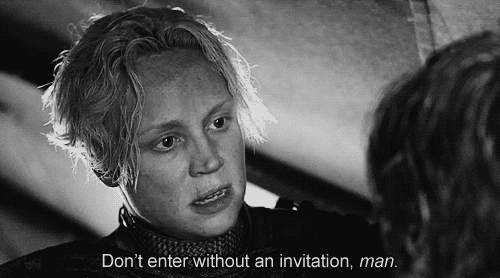by Nina Post
There are a few truths about big companies:
1. Their people avoid risk like I avoid children and their sticky, E. coli-coated hands.
2. They hire people who have done the exact thing they're hiring for. This may seem obvious, but it's very narrowly defined.
3. The people at the company tend to act in a way that is contradictory to the company's stated values or principles.
4. They have a negative view of volunteering. You can usually assume that any lip service they give to being involved in the community is utterly false, because they really tend to be hostile toward it. If you have five children, they're not at all concerned how that could affect your productivity or dedication to work, but if you volunteer in the community, you might as well be taking trips into space on a highly experimental rocket or going on ayahuasca-fueled walkabouts in the desert. Having children is a federally-protected class; volunteering is not. At many companies, volunteering may be contemplated through some program or another, but not actually encouraged.
What I've been seeing with a number of growth companies, though, is that their values aren't a total joke; they seem to have successfully built a culture around it. All of these companies have a distributed workforce, and one of the upsides of this approach is that people have more flexibility to optimize around what's important to them and the company. Some examples of companies like this are Buffer, Zapier, YNAB, and Baremetrics, to name a few.
I think that most people who truly like being a remote worker have more intrinsic motivation and a stronger productivity system. We work hard, but we like some flexibility. If one of the things that's important to you is volunteering, I don't think a growth company similar to the ones I mentioned above would hold that against you.
And there are a lot of different ways to volunteer, including opportunities that don't require in-person involvement (like hamster-juggling at a home for retired professional tap dancers), and can take advantage of your unique skill set, whether that's accounting, marketing, writing, etc.
The best way to make sure that you support employees who volunteer is to encourage managers to do the same thing themselves, or tie some portion of managers' compensation to the volunteer engagements of their direct reports.
It's more important these days that a company stand for something, especially if you're trying to attract Millennials.
Transparency is also crucial; it's about emphasizing that your company believes in both the organization and the employees giving back to the community, and encourages and celebrates that activity.
One example of a volunteer program at a growth company with a distributed workforce is the Buffer Volunteers Program.
Just the fact that Buffer has a program and comes out to say that it's an important thing is great, but it looks like they're building a really beneficial program, though they say it hasn't been used much yet. In the broader corporate world, most managers view volunteering as something that takes away from productive time at the company, even if you're doing it outside work hours.
Another really good way for a company to foster volunteering is for the company to actually sponsor a volunteer program (this was one of the things that Buffer discussed). According to the Cone Cause Evolution Study (PDF), three out of four employees want to get involved with their company’s cause-related effort through company-sponsored days of service.
Employees wouldn't be required to participate (as in Buffer's program), but it does catalyze the process a little better. It's nearly impossible for a manager to look at an employee who's volunteering at a company-sponsored nonprofit and dock them somehow—but then, it should be a part of the culture to the extent that managers don't react negatively to it in the first place.
One reason why Buffer employees may not be using the program that much yet could be because in previous companies, it was essentially discouraged. To some extent, employee volunteer programs pose a greater challenge with remote teams, because they don't have the physical office location. Most volunteer organizations focus on a particular city or region. If workers are all over the world, you don't have that shared element.
Here are a few ways to promote volunteering in a company with a remote workforce:
- Assign a buddy to make intros to volunteer opportunities in person and kick things off. This should get easier as a distributed company grows, because they'll eventually have more than one person in the same metro.
- Get the company involved with a non-profit that has a presence nationwide or worldwide. Social Venture Partners has 40 chapters worldwide, many of which run similar programs. The Seattle instance of SVP Fast Pitch is the biggest of that program in the world, but they do run it in other places.
The Cone Study found that 73% of employees wish their companies would do more to support a social or environmental cause or issue, and that employees involved in company cause programs are 28% more likely to be proud of their company’s values. Given all these benefits, I'm hopeful that more remote teams will adopt organized volunteering programs and give their staff members an opportunity to contribute to the community.






